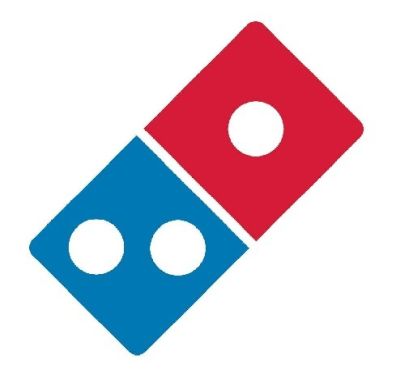We like to report on issues of confusing similarity between trade marks, and we also like to discuss foreign IP cases. In this article, we manage to tick both boxes by discussing two recent trade mark oppositions in Japan. The first opposition involves a well-known fast food industry trade mark, DOMINO'S PIZZA. The second involves a trade mark that frankly sounds downright silly!
THE DOMINO'S PIZZA CASE
The applicant
A Japanese individual filed an application to register the trade mark DOG's PIZZA & Device in Japan (with a Japanese katakana translation of the words) for various goods, including pet food and dog food. The trade mark also comprised a device with red and blue paw prints. Here it is:

*Image credit unknown
The opponent
A company called Domino's IP Holder LLC ("Domino's IP") opposed the application to register the trade mark DOG's PIZZA & Device. The company claimed that there would be a likelihood of confusion with its logo, which comprises a red and blue rectangular emblem with the three white dots. The logo appears below:

The Japan Patent Office (JPO)
The Japan Patent Office ("JPO") could see nothing amiss with the application to register the DOG'S PIZZA & Device trade mark. So it granted registration.
We're not having it!
... said Domino's IP. The company went on to seek cancellation of the trade mark DOG's PIZZA & Device. Domino's IP relied on certain sections of the Japanese legislation, Articles (4(1)(x) and (xix). The company raised a number of issues:
- It claimed that the rectangular device of the 'contested mark' (its trade mark) is distinctive and identifies the source.
- It claimed that the rectangular red-and-blue device with three white dots used by Domino's is famous and has become a source indicator.
- It argued that there is a likelihood of confusion and that consumers will associate the DOG's PIZZA & Device trade mark with Domino's Pizza.
The JPO decision
The decision is perhaps a little surprising. The JPO held as follows:
There is no proof of brand recognition
Despite the fact that there are more than 1000 Domino's Pizza outlets in Japan, we're told that no evidence of Japanese sales figures, market share and advertising expenditure was submitted. Which meant that there was no way of proving considerable brand recognition among the relevant consumers. Bit of a rookie error!
We need hard evidence!
As you might expect from Japan, the JPO Opposition Board took the issue of repute very seriously. It made the point that, despite the considerable number of Domino's Pizza stores in Japan, what the JPO really wants is hard evidence. It wants proof of 'sales figures, market share, and advertising expenditures in Japan and other countries'. Without such evidence, the JPO will not 'find it reasonable to concede a high degree of recognition of the cited mark among the relevant consumers'.
Nor is there any trade mark similarity
The JPO Opposition Board came to the decision that the two trade marks would not be confused. It made the point that, when it came to the dots and the paw prints, there were 'clear differences'. There were also no aural or conceptual similarities.
In summary
There was no likelihood of confusion between the trade marks.
Let's move on to...
SOMETHING A LITTLE TWILLY
On to the case with the trade mark that sounds silly. It's a trade mark that's used in fashion rather than pizzas. It's ...
Kimono Twilly
There is a trade mark registration in Japan for the trade mark KIMONO TWILLY in the name of a body called NPO Kimono for World Heritage Promotion Committee – the registration is in Class 18, which is the class that covers belts, leather goods and the like.
Hermes International
The luxury goods company, Hermes International, filed an opposition against the registration for KIMONO TWILLY. The opposition was based on a trade mark registration for the word TWILLY in classes 24, 25 and 26 (the clothing classes) in the name of Hermes, with the claim being that there was a likelihood of confusion.
The JPO decides
The JPO Opposition Board made a number of findings:
- Evidence that had been filed to substantiate a high degree of recognition of the trade mark TWILLY was totally inadequate – there was no evidence of sales figures, market share and advertising expenditure in Japan and elsewhere (another rookie error!);
- The trade mark KIMONO TWILLY should be assessed in its entirety, even if the word 'kimono' does indicate a traditional piece of Japanese clothing;
- The two trade marks are dissimilar - there is a clear difference in appearance and sound.
So again, no likelihood of confusion!
The content of this article is intended to provide a general guide to the subject matter. Specialist advice should be sought about your specific circumstances.


